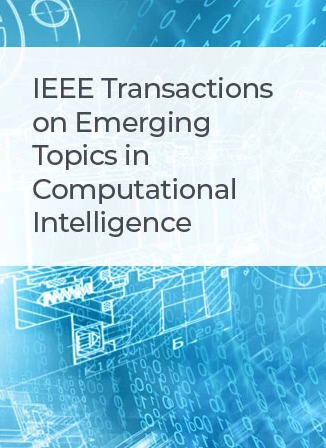Low-Light Image Enhancement Network Based on Multi-Scale Residual Feature Integration
IF 5.3
3区 计算机科学
Q1 COMPUTER SCIENCE, ARTIFICIAL INTELLIGENCE
IEEE Transactions on Emerging Topics in Computational Intelligence
Pub Date : 2024-12-11
DOI:10.1109/TETCI.2024.3508834
引用次数: 0
Abstract
Owing to insufficient light, images captured in low-light environment have a series of image degradation problems such as low visibility, color deviation, and noise. To address these problems, an image enhancement network based on multi-scale residual feature integration (IEN-MRFI) is proposed, which includes two modules: a shallow feature extraction module (SFEM) and a multi-scale feature integration module (MFIM). First, the SFEM is constructed for extracting multi-scale shallow features through three-scale convolutional layers and smooth convolution residual blocks (SCRBs). The constructed SCRB runs through the entire network to extract features and avoid gridding artifacts. Then, the MFIM is constructed by cascading multiple feature integration residual blocks to fuse the shallow and deep features of the same scale. Finally, the fused features are passed through a convolutional layer to obtain an enhanced result. In addition, to improve the generalization ability of our network, this study constructs an outdoor dataset for the training of the low-light image enhancement network. Experiments on indoor and outdoor images show that the enhancement results of our method can provide more accurate color saturation and richer details than those of some state-of-the-art methods. We intend to make the constructed dataset public after our paper is accepted for publication.基于多尺度残差特征集成的弱光图像增强网络
由于光线不足,在弱光环境下拍摄的图像存在能见度低、色彩偏差、噪声等一系列图像退化问题。针对这些问题,提出了一种基于多尺度残差特征集成的图像增强网络(IEN-MRFI),该网络包括两个模块:浅层特征提取模块(SFEM)和多尺度特征集成模块(MFIM)。首先,构建SFEM,通过三尺度卷积层和平滑卷积残差块(scrb)提取多尺度浅层特征;构建的SCRB在整个网络中运行,以提取特征并避免网格伪影。然后,通过级联多个特征集成残差块来构建MFIM,融合相同尺度的浅层和深层特征;最后,对融合后的特征进行卷积层处理,得到增强结果。此外,为了提高网络的泛化能力,本研究构建了一个室外数据集用于弱光图像增强网络的训练。在室内和室外图像上的实验表明,与目前的一些方法相比,我们的方法可以提供更准确的色彩饱和度和更丰富的细节。我们打算在我们的论文被接受发表后将构建的数据集公开。
本文章由计算机程序翻译,如有差异,请以英文原文为准。
求助全文
约1分钟内获得全文
求助全文
来源期刊

IEEE Transactions on Emerging Topics in Computational Intelligence
Mathematics-Control and Optimization
CiteScore
10.30
自引率
7.50%
发文量
147
期刊介绍:
The IEEE Transactions on Emerging Topics in Computational Intelligence (TETCI) publishes original articles on emerging aspects of computational intelligence, including theory, applications, and surveys.
TETCI is an electronics only publication. TETCI publishes six issues per year.
Authors are encouraged to submit manuscripts in any emerging topic in computational intelligence, especially nature-inspired computing topics not covered by other IEEE Computational Intelligence Society journals. A few such illustrative examples are glial cell networks, computational neuroscience, Brain Computer Interface, ambient intelligence, non-fuzzy computing with words, artificial life, cultural learning, artificial endocrine networks, social reasoning, artificial hormone networks, computational intelligence for the IoT and Smart-X technologies.
 求助内容:
求助内容: 应助结果提醒方式:
应助结果提醒方式:


